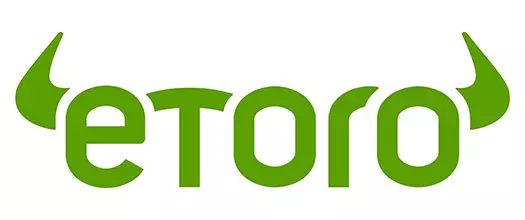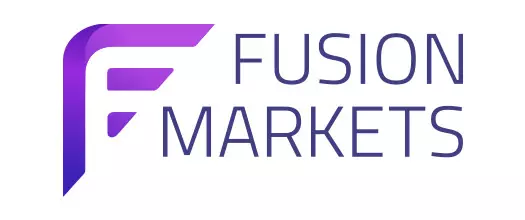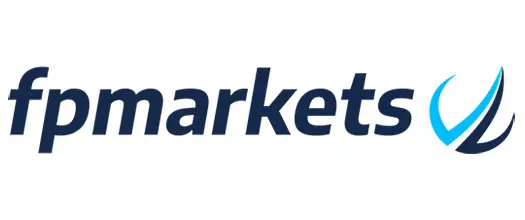- Jump to:
- Main features of the best Credit Cards Forex brokers
- How to Deposit
- How to Withdraw
- Pros
- Cons
- Fees and Limits
- Chargeback
- Security
- Conclusion
Are you looking for regulated and trustworthy forex brokers that accept credit cards? Our team of expert traders tested many forex brokers using real accounts and compiled a list of the best trading sites where you can deposit with your credit card.
 Plus500 USThis content applies only to Plus500 US and clients from the United States. Trading futures involves the risk of loss.
Plus500 USThis content applies only to Plus500 US and clients from the United States. Trading futures involves the risk of loss. eToro61% of retail investor accounts lose money
eToro61% of retail investor accounts lose money Fusion Markets74-89% of retail's CFD accounts lose money
Fusion Markets74-89% of retail's CFD accounts lose money FP Markets73.85% of retail investor accounts lose money
FP Markets73.85% of retail investor accounts lose money Global Prime74-89% of retail CFD accounts lose money
Global Prime74-89% of retail CFD accounts lose money Pepperstone75.5% of retail investor accounts lose money
Pepperstone75.5% of retail investor accounts lose money
Later in this article, you will find a comparison table of forex brokers that accept credit/debit card deposits. We ranked them according to several factors, including regulatory background, spreads and commissions, Trustpilot rating, trading instruments, supported platforms and available payment methods.
The brokers listed below have been thoroughly evaluated by our team using TradingPedia’s exclusive methodology.
Main features of the best credit card forex brokers
- Brand
- Trading platforms
- Minimum deposit
- Regulations
- Trading instruments
- Spreads
- Leverage for Forex CFDs
- Leverage for Crypto CFDs
- Leverage for Indices CFDs
- Deposit methods
- Withdrawal Methods
- Commission per Lot
- Contact details
How to fund a forex account with a credit card
Making a payment with a credit card is not particularly difficult. In fact, it is one of the simplest online payment methods, with millions of people using it daily. Furthermore, you will be hard-pressed to find an online forex broker that does not accept credit cards for deposits.
Forex trading sites strive to make banking easy and accessible for their entire customer base. While each website has its own particularities, the transaction process is similar across all brokers. To deposit with a credit card, you must log into your live trading account and navigate to the payment section in the client area, where you should select credit cards from the list of supported payment methods. Next, enter your preferred deposit amount and your card details, including the 16-digit number, expiry date, CVV/CVC number and the cardholder’s name.
Regulated brokers follow strict anti-money-laundering and counter-terrorist-financing policies, which prevent them from accepting payments from third parties. This means you can only use a credit card registered in your own name and cannot deposit with the card of a spouse, friend or relative. In line with these requirements, many brokers will ask you to upload copies of the front and back of your credit card during the initial deposit process. This measure is in place for verification purposes and aims to ensure you are the rightful owner of the card or payment method used.
Double-check that you have entered your card information correctly before confirming the transaction. In most cases the funds are credited to your account immediately, although you should allow up to one business day for them to appear in your live balance.
How to withdraw from a forex account with a credit card
When you initiate a withdrawal, you will find that the process is quite similar to depositing. Simply go to the payments section of your account and select credit cards as your preferred withdrawal method. Enter the required information, if prompted, and specify the amount you wish to withdraw. It is important to note that most brokers automatically return withdrawals to the same payment method that traders used for deposits.
Once you submit your withdrawal request, the broker’s finance department will need time to review and approve it. This usually takes one or two business days. After approval, the transaction needs several more business days to clear – typically between one and five working days, depending on your bank and country of residence.
Another point to bear in mind is that you must verify your trading account before you can request a withdrawal. Identity verification involves uploading photos of a valid government-issued identity document (ID card, passport, driver’s licence), recent utility bills and photos of the front and back of the card. Ensure all information in your photos is legible to avoid further delays.
Benefits of using credit cards for forex trading
Using a credit card offers several benefits. Below we focus on the main advantages and provide a brief overview of each.
When you use a credit card for forex transactions, you can rely on smooth and convenient payments. Credit card deposits are typically immediate, ensuring you never miss out on potentially lucrative trading opportunities. Card transactions are considerably faster than other common payment solutions, such as the bank transfer, which takes several business days to process. Payments are often free, as most brokers do not impose extra charges on card deposits. There are little to no transaction fees.
Initiating deposits and requesting withdrawals are incredibly straightforward with cards. All you have to do is enter the correct card information in the relevant fields and confirm the payment. Many websites allow you to save these details for future use, so you only need to do it once. Most brokers accept Visa and Mastercard, so finding a reliable trading site where you can deposit and withdraw with your card should be relatively easy.
Disadvantages of using credit cards for forex trading
Of course, credit cards are not the be-all and end-all of online transactions. Despite their advantages, they do have drawbacks you should consider. For instance, withdrawals to a credit card can be slow and may take several business days to process, depending on your bank and country of residence. Alternative payment solutions such as Skrill, PayPal and Neteller often provide considerably faster withdrawals. The slower processing times are something you will have to accept if you choose to withdraw via credit card.
Another drawback is that you must provide sensitive information during the transaction process. Although this data is protected by SSL encryption, it can still make some traders uncomfortable. As with the previous issue, you can avoid this by choosing an alternative payment method.
When it comes to protecting your money and identity on the internet, you should take no chances. Therefore, if you feel uncomfortable revealing your credit card information, it is best to choose a different banking solution. Last but not least, consider the non-trading costs that sometimes accompany card deposits. While most brokers waive their own fees, the card issuer or bank may charge you extra. These fees are bank-specific, so you should check them in advance.
Fees and limits when using credit cards to trade forex
As far as fees are concerned, we cannot provide any concrete information. Credit cards are offered by every bank and each has its own terms and fee structure. We recommend you contact a representative of your bank or visit its website to learn more about the fees you can expect.
As for brokers, they usually charge no additional fees for card deposits and withdrawals. When they do, they specify the extra costs during the transaction process. Fees for currency conversion may also apply if you deposit in a currency different from your base account currency.
Transaction limits are another important aspect to consider. Much like fees, the limits vary across brokers and banks. Spending limits also depend on the type of credit card you use. Going over that amount may result in over-limit fees, but these cannot exceed the amount the cardholder has overspent.
In the United States, most issuers prohibit cardholders from spending over their limit and transactions merely fail when this happens. As required by the Credit Card Accountability Responsibility and Disclosure Act of 2009, cardholders must opt in and agree to the over-limit charges before the issuer deducts them.
Forex brokers also impose minimum and maximum limits on card transactions, but these restrictions largely depend on where you trade. Most brokers require minimum deposits of $20 to $100, while the ceiling reaches $50,000 or more in some cases. Client categorisation also matters. Professional traders can typically move larger amounts to and from their live balance.
Credit card chargebacks on forex accounts
Cardholders can request a chargeback in the event of fraud, duplicate payments or transaction mistakes resulting from technical issues. You can also dispute a transaction when the money has been deducted from your card but the deposit amount has not appeared in your live trading balance. Chargebacks are not granted instantly, as card issuers must first investigate the reasons for the dispute. There are proper steps to follow in such cases.
You must first discuss the issue with representatives of the broker’s finance department and provide proof of the transaction. If this fails to help, you can escalate the issue to your bank. The time frames for evaluating chargeback claims vary dramatically based on the policies of the card issuers. Disputing chargebacks should be your last resort, as the process may take up to 120 days in some cases and the issuer may not honour your chargeback request.
Security when trading forex with credit cards
When discussing the disadvantages of credit cards, we noted that using them involves revealing sensitive financial information, and you naturally do not want it to be compromised. The good news is that all regulated forex brokers safeguard customers’ transactions with state-of-the-art SSL encryption, preventing sensitive information from being intercepted during transmission.
Encryption keys are used in conjunction with complex algorithms to encode the transmitted data and render it unreadable. The intended recipient must decipher the data using a unique decryption key that transforms it into readable text. We should also mention that all regulated brokers operate in strict compliance with the Payment Card Industry Data Security Standard (PCI DSS), a set of rules minimising the risks of data breaches and ensuring the security of clients’ sensitive information.
Conclusion
At the end of the day, credit cards represent a convenient and simple way to move funds to and from your forex trading account. They offer great flexibility and are accepted at almost every online trading site. While not entirely without disadvantages, cards facilitate timely, fee-free and straightforward deposits and withdrawals at hundreds of forex brokers. If you do not feel like dealing with bank transfers or e-wallets, cards may prove the right payment method for you.








